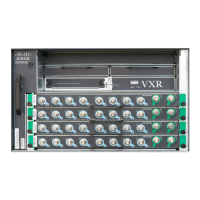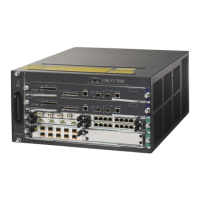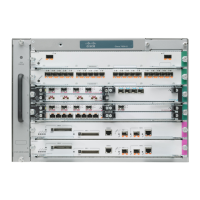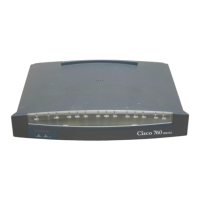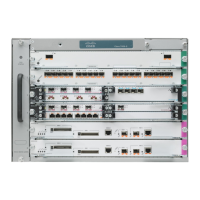Send document comments to nexus7k-docfeedback@cisco.com
2-7
Cisco Nexus 7000 Series NX-OS Interfaces Configuration Guide, Release 5.x
OL-23435-03
Chapter 2 Configuring Basic Interface Parameters
Information About the Basic Interface Parameters
Bandwidth
Ethernet ports have a fixed bandwidth of 1,000,000 Kb at the physical level. Layer 3 protocols use a
bandwidth value that you can set for calculating their internal metrics. The value that you set is used for
informational purposes only by the Layer 3 protocols—it does not change the fixed bandwidth at the
physical level. For example, the Interior Gateway Routing Protocol (IGRP) uses the minimum path
bandwidth to determine a routing metric, but the bandwidth at the physical level remains at 1,000,000
Kb.
For information on configuring the bandwidth parameter for port-channel interfaces, see the
“Configuring the Bandwidth and Delay for Informational Purposes” section on page 6-21. For
information on configuring the bandwidth parameter for other interfaces, see the “Configuring the
Bandwidth” section on page 2-34.
Throughput Delay
Specifying a value for the throughput-delay parameter provides a value used by Layer 3 protocols; it
does not change the actual throughput delay of an interface. The Layer 3 protocols can use this value to
make operating decisions. For example, EIGRP can use the delay setting to set a preference for one
Ethernet link over another, if other parameters such as link speed are equal. The delay value that you set
is in the tens of microseconds.
For information on configuring the bandwidth parameter for port-channel interfaces, see the
“Configuring the Bandwidth and Delay for Informational Purposes” section on page 6-21. For
information on configuring the throughput-delay parameter for other interfaces, see the “Configuring the
Throughput Delay” section on page 2-36.
Administrative Status
The administrative-status parameter determines whether an interface is up or down. When an interface
is administratively down, it is disabled and unable to transmit data. When an interface is administratively
up, it is enabled and able to transmit data.
For information on configuring the administrative status parameter for port-channel interfaces, see the
“Shutting Down and Restarting the Port-Channel Interface” section on page 6-22. For information on
configuring the administrative-status parameter for other interfaces, see the “Shutting Down and
Activating the Interface” section on page 2-37.
Unidirectional Link Detection Parameter
This section includes the following topics:
• UDLD Overview, page 2-8
• Default UDLD Configuration, page 2-9
• UDLD Aggressive and Nonaggressive Modes, page 2-9
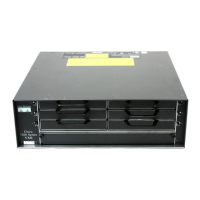
